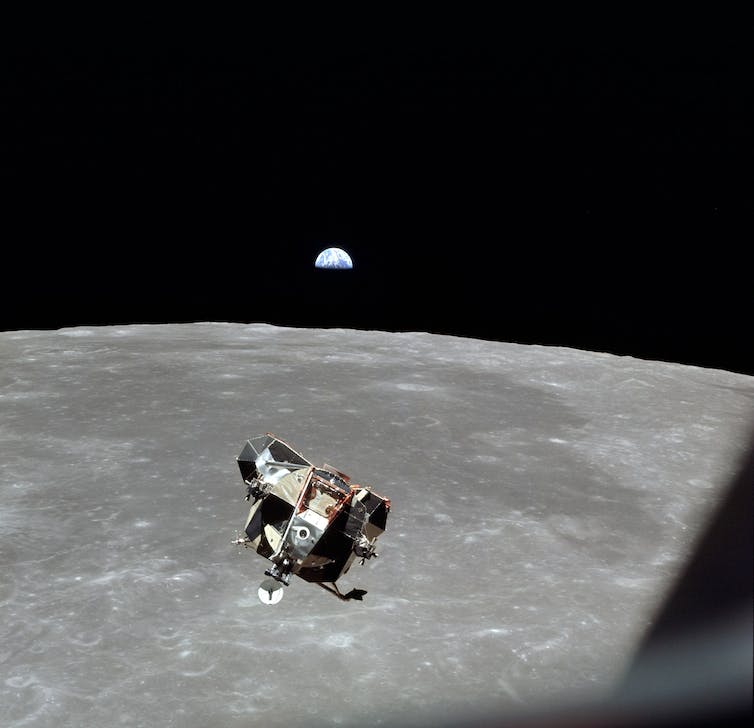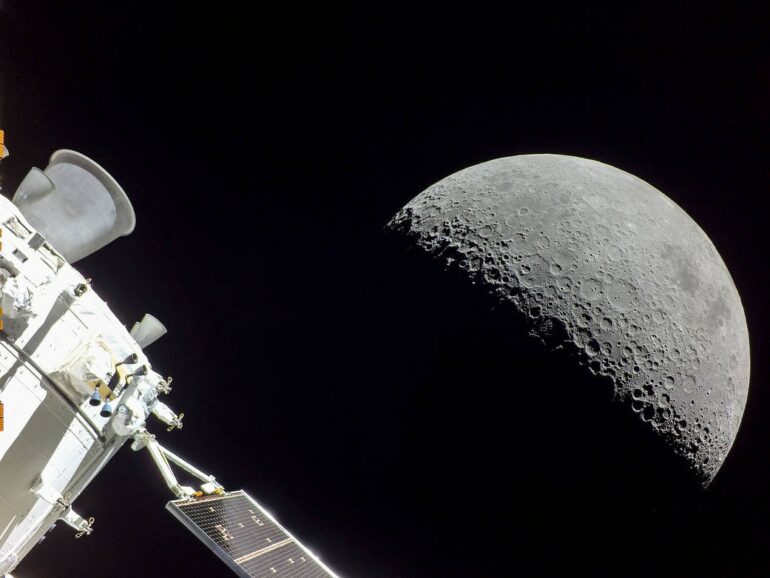Scientists and government agencies have been worried about the space junk surrounding Earth for decades. But humanity’s starry ambitions are farther reaching than the space just around Earth. Ever since the 1960s with the launch of the Apollo program and the emergence of the space race between the U.S. and Soviet Union, people have been leaving trash around the Moon, too.
Today, experts estimate that there are a few dozen pieces of space junk like spent rocket bodies, defunct satellites and mission-related debris orbiting in cislunar space – the space between Earth and the Moon and the area around the Moon. While this isn’t yet a large amount of junk, astronomers have very little information about where these pieces of space debris are, let alone what they are and how they got there.
I am a planetary scientist and also run the Space Safety, Security and Sustainability Center at the University of Arizona. As the focus of space activities turns to the Moon, with each future mission more junk will be left in cislunar space. This junk is an emerging problem that could create hazardous conditions for astronauts and spacecraft in the future.
My colleague Roberto Furfaro and I are hoping to help prevent this problem from getting out of hand. Together, we are using telescopes and existing databases on lunar missions to find, describe and track lunar space debris and build the world’s first catalog of cislunar space objects.

Since the 1960s, missions like the Apollo program missions have been sending robots and people to the Moon and leaving pieces of junk behind.
NASA
Abandoned and potentially dangerous
Historically, NASA and the U.S. military have not closely tracked space debris from the many dozens of crewed and robotic missions to the Moon. There is no international agency that has monitored lunar objects, either. This lack of oversight is why scientists don’t know the location or orbit of the vast majority of lunar space debris. And these objects won’t simply go away – in the near total vacuum of space, anything left in orbit around the Moon or in cislunar space will likely remain there for at least decades.
This lack of information about human-made objects orbiting the Moon poses many risks for lunar missions.
First is the risk of collision. Humanity is at the beginning of a new wave of lunar exploration. Over the next 10 years, six countries and several commercial companies have plans for more than 100 missions. With every mission, the risk of a collision with existing debris increases and so, too, does the total amount of debris as missions leave junk behind.
Crash landings onto the surface of the Moon are also a real risk because the Moon does not have a thick atmosphere that can burn up falling space junk. This was dramatically demonstrated by the impact of a spent Chinese rocket booster into the far side of the Moon in March 2022. My team and I were the ones to finally…
